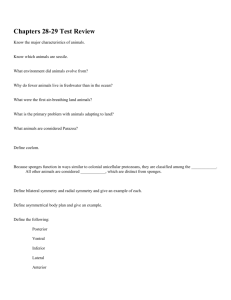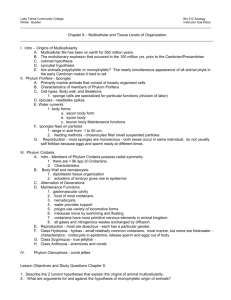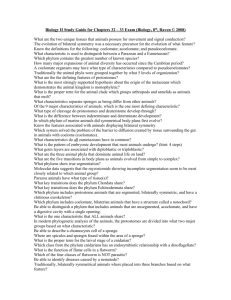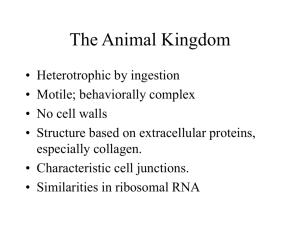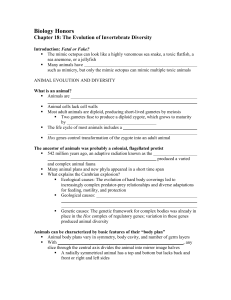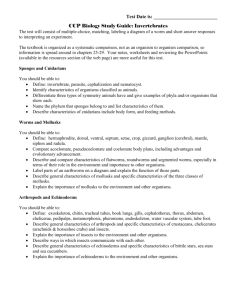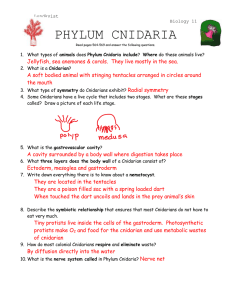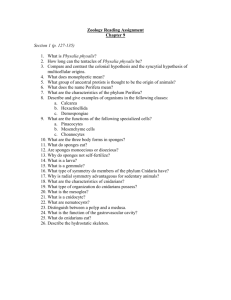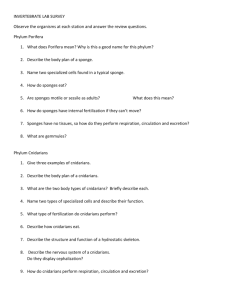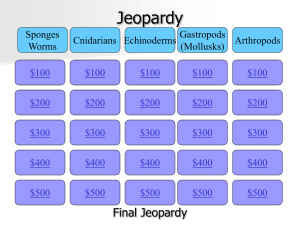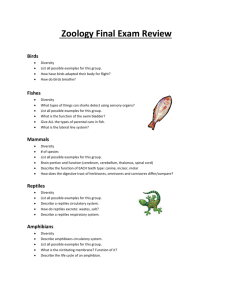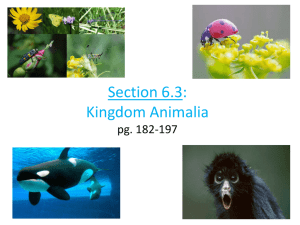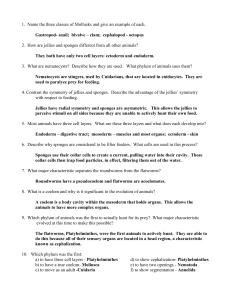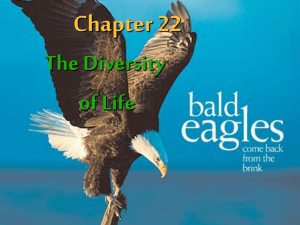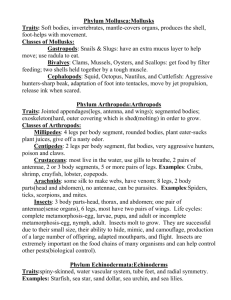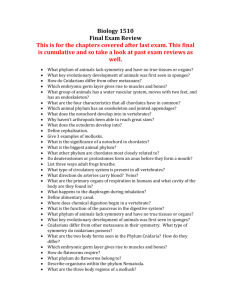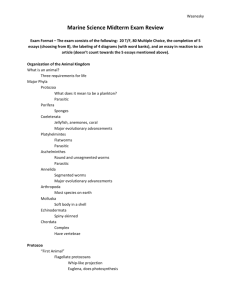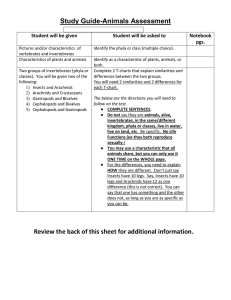Invertebrate Assignments
advertisement
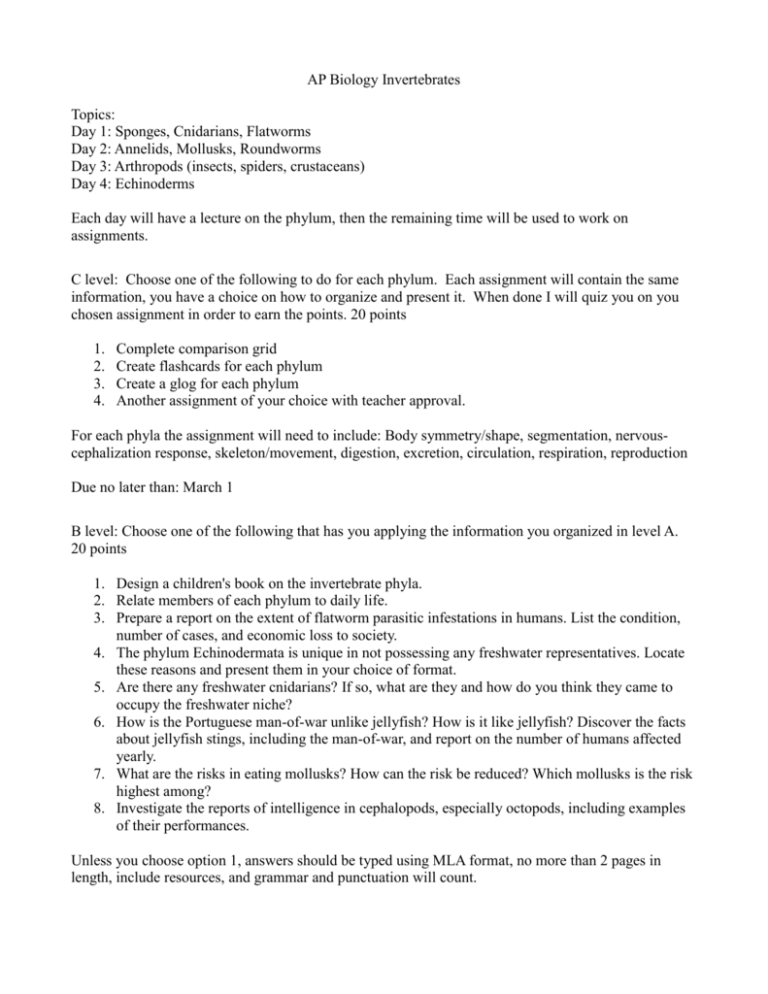
AP Biology Invertebrates Topics: Day 1: Sponges, Cnidarians, Flatworms Day 2: Annelids, Mollusks, Roundworms Day 3: Arthropods (insects, spiders, crustaceans) Day 4: Echinoderms Each day will have a lecture on the phylum, then the remaining time will be used to work on assignments. C level: Choose one of the following to do for each phylum. Each assignment will contain the same information, you have a choice on how to organize and present it. When done I will quiz you on you chosen assignment in order to earn the points. 20 points 1. 2. 3. 4. Complete comparison grid Create flashcards for each phylum Create a glog for each phylum Another assignment of your choice with teacher approval. For each phyla the assignment will need to include: Body symmetry/shape, segmentation, nervouscephalization response, skeleton/movement, digestion, excretion, circulation, respiration, reproduction Due no later than: March 1 B level: Choose one of the following that has you applying the information you organized in level A. 20 points 1. Design a children's book on the invertebrate phyla. 2. Relate members of each phylum to daily life. 3. Prepare a report on the extent of flatworm parasitic infestations in humans. List the condition, number of cases, and economic loss to society. 4. The phylum Echinodermata is unique in not possessing any freshwater representatives. Locate these reasons and present them in your choice of format. 5. Are there any freshwater cnidarians? If so, what are they and how do you think they came to occupy the freshwater niche? 6. How is the Portuguese man-of-war unlike jellyfish? How is it like jellyfish? Discover the facts about jellyfish stings, including the man-of-war, and report on the number of humans affected yearly. 7. What are the risks in eating mollusks? How can the risk be reduced? Which mollusks is the risk highest among? 8. Investigate the reports of intelligence in cephalopods, especially octopods, including examples of their performances. Unless you choose option 1, answers should be typed using MLA format, no more than 2 pages in length, include resources, and grammar and punctuation will count. A level: Choose one of the following discussion topics to report on. 20 points 1. When a pet owner says, “My animal has worms,” what worm is most likely present? How could you distinguish between a flatworm and a roundworm, other than by shape? 2. Why is the word “primitive” not accurate in describing early groups like sponges and cnidarians? In the early days of biological investigation, sponges and even some cnidarians were classified as plants. Search some older textbooks to see when and why scientists changed their minds. 3. Some people don’t consider an organism as a true animal unless it bleeds red when injured. Do any of the animals presented in this chapter fit this “definition”? 4. The blood fluke, Schistosoma, is an important human parasite. What role do parasites play in nature? Are they always the “villains”? 5. Why do people normally refuse to eat insects when insects’ close relatives such as crayfish and lobsters, and near relatives such as snails and oysters, are gourmet items? Research the extent to which insects are used as human food in countries around the world. Answers should be typed using MLA format, no more than 2 pages in length and include resources. Grammar and punctuation will count. Library March 1 to work on layers B and A Layers B and A do no later than March 3 Assignments can be found and submitted on teacher website: http://www.lancaster.k12.oh.us/olc/teacher.aspx?s=412

